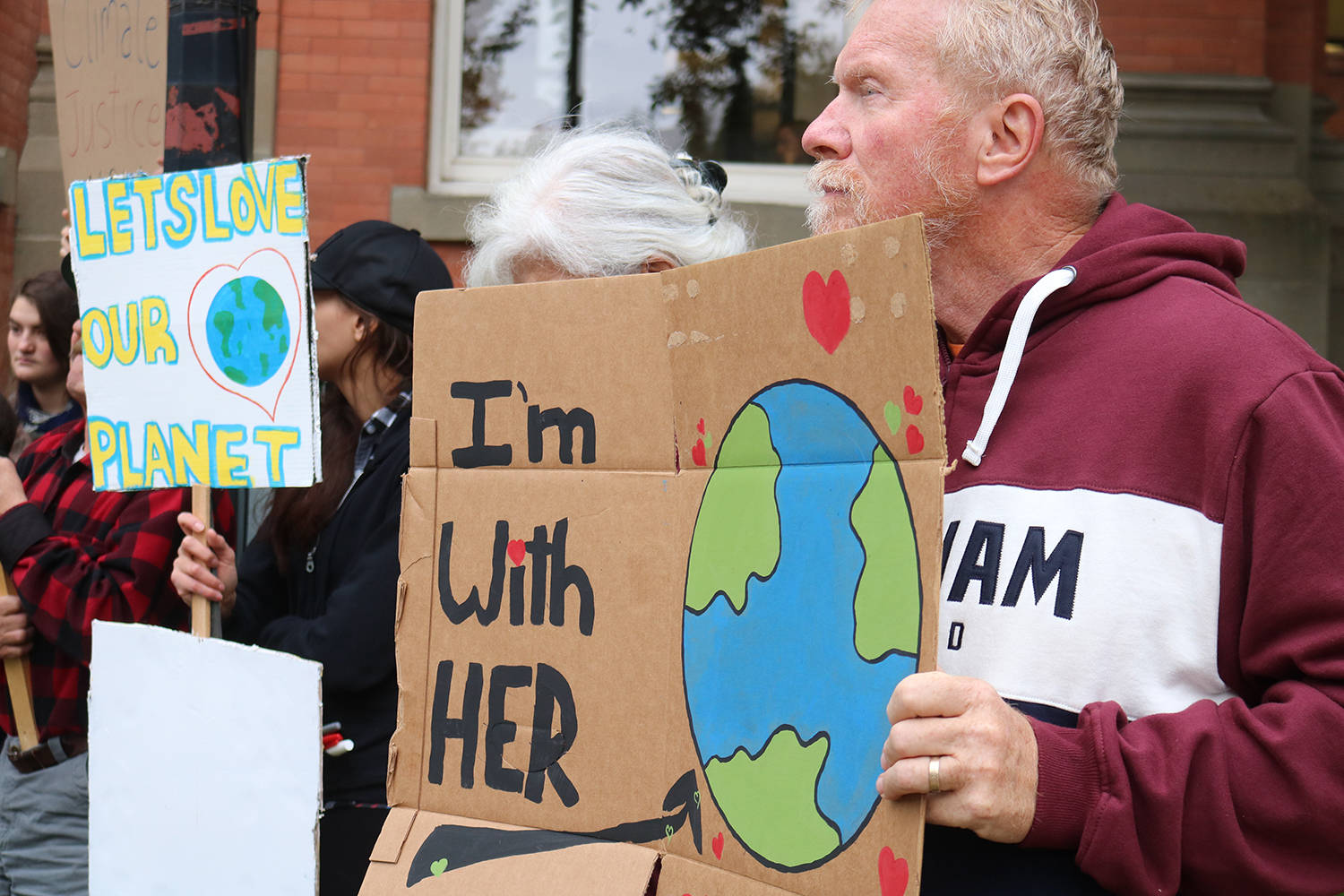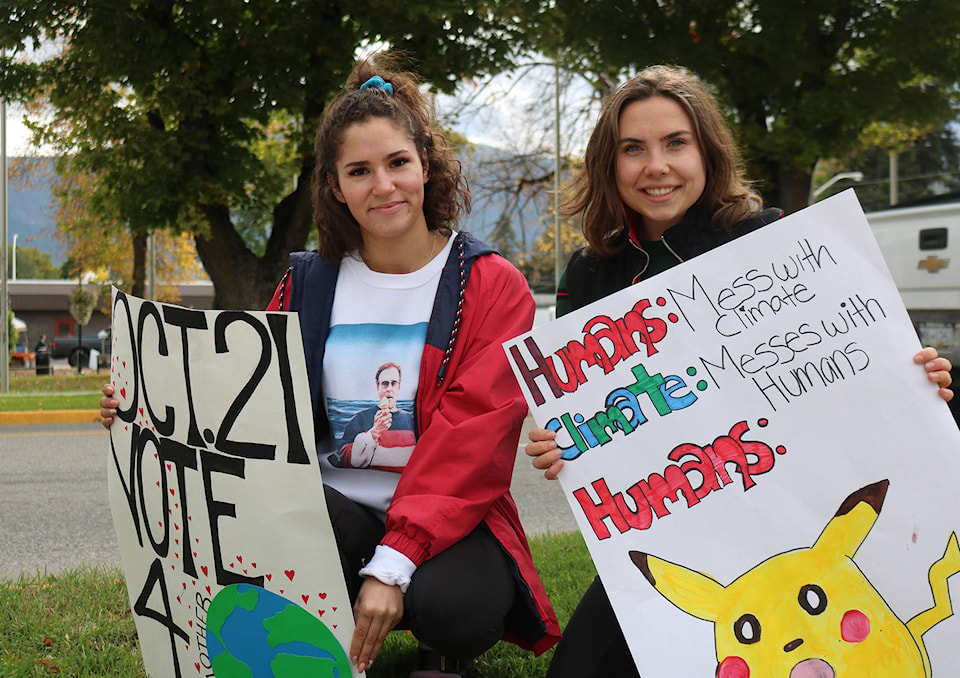“What do we want?”
“Climate action!”
“When do we want it?”
“Now.”
Several dozen marchers, from toddlers to septuagenarians, chanted their desire to see climate change concerns addressed as they paraded around downtown Grand Forks last Friday as part of the world-wide day of protests, spurred on by 16-year-old Swedish climate activist Greta Thunberg.
Hundreds of thousands marched in Montreal, Toronto and Vancouver, more rallied at the B.C. legislature and hardy marchers brought their winter jackets out early in Grand Forks and Greenwood to join the movement.
“I’m thinking about my future and my future kids,” said Charity Starchuk, an 18-year-old who attended the Grand Forks march on Friday with friend Olivia Pavan. “I want to bring them into a good world and a healthy environment. If we’re going to be destroying it with pollution, then it’s not going to be the beautiful Earth that I grew up in for my kids.”
Where, 10 years ago, a target deadline for reducing greenhouse gas emission like 2050 may have seemed to be a long way off, Pavan said, now, it feels immanent.
“2050 – I’m going to be 50! I want to be able to do stuff and travel and not be in such a global situation where we cannot be active in the global community in that way.”
For Grand Forks, climate change effects may look like longer growing seasons and extended droughts, according to a new climate projection tool released by the Columbia Basin Trust and Selkirk College’s Applied Research and Innovation Centre last month.
The interactive map and website, found at basinclimatesource.ca, allows users to toggle between low and high-carbon projections for the region up through 2080, while comparing forecasts to figures from the mid 20th century.
“We’ve spoken extensively with residents and communities and heard they want to learn how to reduce their contributions to greenhouse gas emissions and learn how to adapt to climate change,” said Tim Hicks, senior manager, Delivery of Benefits. “We also heard people want more detailed information about how climate change may affect their communities in the coming decades.”
Low-carbon projections model a world in which greenhouse gas levels are brought within the range of that established in the 2016 Paris Agreement. High-carbon projections give a sense of climate consequences if the world goes about a “business as usual” approach to greenhouse gas emissions.
Through data, videos, maps and more, the website provides a one-stop site that helps users learn about how the climate is changing across the region (with detailed projections for over 40 climate variables), how this might impact communities, how communities are taking action and how people can use and interpret climate science data.
“This website is a valuable tool for those people wanting to learn more about the impacts of climate change, to envision what our ecosystems will look like and to access these important data,” said Juliet Craig, Kootenay Conservation Program manager.
Both first-time voters in the 2019 federal election, Pavan and Starchuk said that they’ve been doing their research too. The pair said that the parties’ platforms on how to tackle climate change will inform how they vote on Oct. 21.
“My number one issue is the climate,” said Pavan. “It’s one of my biggest stressors in life.”
“I wasn’t big into politics,” Starchuk said, noting that Pavan has been encouraging her to vote. “I am now.”
–With files from Black Press Staff
RELATED: Students skip school, join climate strikes across B.C.
@jensenedw
Jensen.edwards@grandforksgazette.ca
Like us on Facebook and follow us on Twitter.

